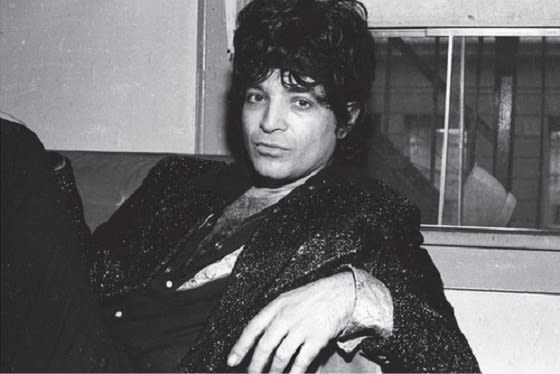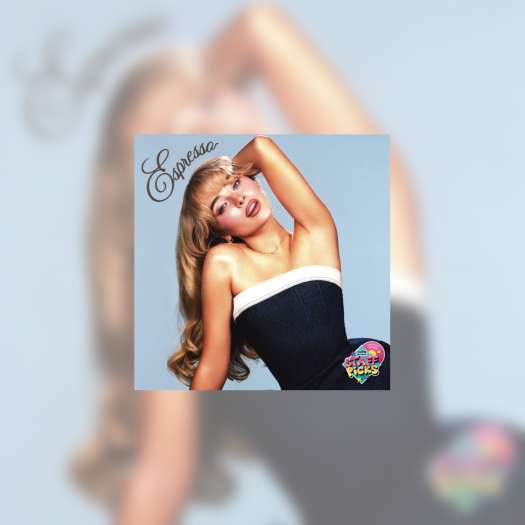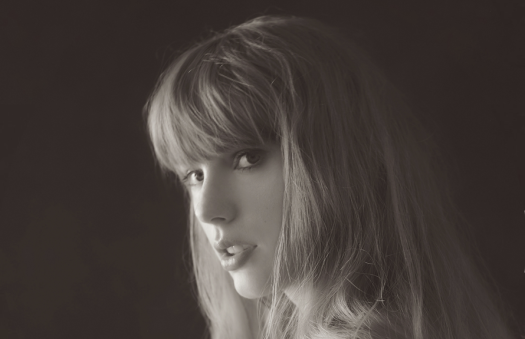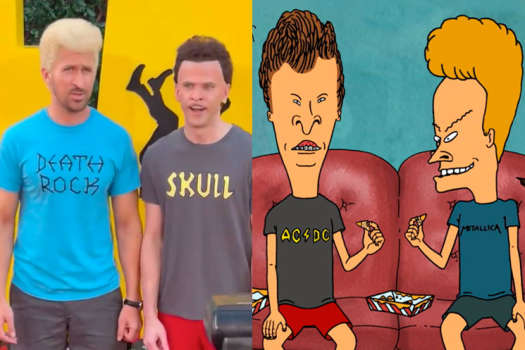This year has been particularly unkind to the music world, with a number of icons having passed away over the last seven months. Suicide frontman Alan Vega, who died over the weekend at the age of 78, may not have been a mainstream success in the same fashion as David Bowie or Prince, but the vocalist and provocateur was an influential force in his own right.
Born Alan Bermowitz in 1938, the Brooklyn-raised artist would gain notoriety in the early 1970s by forming the violently named Suicide with organist/programmer Martin Rev. Together, they'd offer up a clash of alternately brutal and beautiful tones, via the use of repetitive farfisa melodies, primitive drum machine beats and the bizarro, baritone croon of Vega. Live shows would be just as depraved, with with fantastically coiffed Vega occasionally challenging the crowd physically, on top of vocally.
Credited with influencing punk, post-punk, industrial and the electronic music world, the band's 1977 self-titled debut is a landmark release for many reasons, but also just the tip of the iceberg in terms of Vega's prolific career. Below, you'll find just a few great tracks left behind by the powerful, enigmatic Alan Vega.
The Essential Songs of Alan Vega:
1. "Ghost Rider"
As the opening number on Suicide's self-titled debut, "Ghost Rider" is the easiest way to enter the band's catalogue. Rev provides a backdrop of distortion-fried farfisa and cyclical mechano poundings above which Vega introduces us to his patented, genre-perverting rock'n'roll croon. "Baby, baby, baby, he's looking so cute," the singer quivers of the titular figure ahead of decidedly disillusioned follow-up musings like "America is killing its youth." Though named after a comic book character with a flaming skull, the track is a trip into Suicide's darkly sexual abyss.
2. "Frankie Teardrop"
Another early terrorscape, "Frankie Teardrop" is an epic, 10-and-a-half-minute look at poverty, hardship, failure and, ultimately, death. The barebones arrangement throbs and pulsates the same throughout, leaving Vega to ramp things up while reporting on Frankie's downward spiral of losing his job, being evicted and killing his family. Disconcertingly, Vega punctuates the piece with a series of nasty moans and gallows shrieking. A classic, but not for the faint of heart.
3. "Dream Baby Dream"
Suicide could be a deadly force, though the band also offered up some of the most gorgeous and sigh-inducing sounds to come out of 1970s New York. "Dream Baby Dream" from 1979 is positively heavenly, with the duo adding multiple layers of organ and childlike glockenspiel to their template. Vega goes hopeful on the tune, telling us to strive for more with lines like "We gotta keep the fire burning."
4. "Scream and Shout"
Suicide performances were said to have caused a handful of riots over the years, other times just wholly freaking the fuck out of audiences. Vega added to this at times by wielding a motorcycle chain or striking audience members. A live recording of "Scream and Shout" taps into the insanity, a mangled and uncomfortable piece pitting goofball circus organ melodies with Vega's nervous assertions that, in addition to screaming and shouting, "we got to beat the shit out of" somebody. A lone woman in the crowd complies to at least one of the commands, letting a wild wail enter an already chaotic piece.
5. "Jukebox Babe"
At its core, Vega's twitched-lip delivery owes much to the '50s rock'n'roll scene. Working outside of Suicide, his eponymous 1981 solo album found him backed by rockabilly guitars and hotly honked harmonicas, making this influence much clearer. Standout "Jukebox Babe" is a psychotic reworking of that early renegade music.
6. "Tangerine"
Though working actively from 1970s up to the early 2010s, a stroke suffered in 2012 led Vega to distance himself from music. This year, he returned to contribute vocals to "Tangerine," a song off of French musician Cristophe's 2016 collection, Les vestiges du Chaos. The track works a slick four-on-the-floor thud and glossy synth sounds, while Vega uses a familiar snarl to detail his disillusionment with snake-eyed characters. Intense until the end, it's the last piece Vega released in his lifetime.
The Influence of Alan Vega:
It should be noted that the music of Suicide and Alan Vega not only inspired many to make music but also to put their own unique spin on some of the band's classic cuts. Back in 1994, Rollins Band put a toughened-up, blues-metal twist on "Ghost Rider," while M.I.A. sampled the song on 2010's "Born Free." The act's most famous booster might have been Bruce Springsteen, who recorded a version of "Dream Baby Dream" for his 2014 collection, High Hopes.
You'll find those songs below, though they are just a few of many tributes to Suicide.
Born Alan Bermowitz in 1938, the Brooklyn-raised artist would gain notoriety in the early 1970s by forming the violently named Suicide with organist/programmer Martin Rev. Together, they'd offer up a clash of alternately brutal and beautiful tones, via the use of repetitive farfisa melodies, primitive drum machine beats and the bizarro, baritone croon of Vega. Live shows would be just as depraved, with with fantastically coiffed Vega occasionally challenging the crowd physically, on top of vocally.
Credited with influencing punk, post-punk, industrial and the electronic music world, the band's 1977 self-titled debut is a landmark release for many reasons, but also just the tip of the iceberg in terms of Vega's prolific career. Below, you'll find just a few great tracks left behind by the powerful, enigmatic Alan Vega.
The Essential Songs of Alan Vega:
1. "Ghost Rider"
As the opening number on Suicide's self-titled debut, "Ghost Rider" is the easiest way to enter the band's catalogue. Rev provides a backdrop of distortion-fried farfisa and cyclical mechano poundings above which Vega introduces us to his patented, genre-perverting rock'n'roll croon. "Baby, baby, baby, he's looking so cute," the singer quivers of the titular figure ahead of decidedly disillusioned follow-up musings like "America is killing its youth." Though named after a comic book character with a flaming skull, the track is a trip into Suicide's darkly sexual abyss.
2. "Frankie Teardrop"
Another early terrorscape, "Frankie Teardrop" is an epic, 10-and-a-half-minute look at poverty, hardship, failure and, ultimately, death. The barebones arrangement throbs and pulsates the same throughout, leaving Vega to ramp things up while reporting on Frankie's downward spiral of losing his job, being evicted and killing his family. Disconcertingly, Vega punctuates the piece with a series of nasty moans and gallows shrieking. A classic, but not for the faint of heart.
3. "Dream Baby Dream"
Suicide could be a deadly force, though the band also offered up some of the most gorgeous and sigh-inducing sounds to come out of 1970s New York. "Dream Baby Dream" from 1979 is positively heavenly, with the duo adding multiple layers of organ and childlike glockenspiel to their template. Vega goes hopeful on the tune, telling us to strive for more with lines like "We gotta keep the fire burning."
4. "Scream and Shout"
Suicide performances were said to have caused a handful of riots over the years, other times just wholly freaking the fuck out of audiences. Vega added to this at times by wielding a motorcycle chain or striking audience members. A live recording of "Scream and Shout" taps into the insanity, a mangled and uncomfortable piece pitting goofball circus organ melodies with Vega's nervous assertions that, in addition to screaming and shouting, "we got to beat the shit out of" somebody. A lone woman in the crowd complies to at least one of the commands, letting a wild wail enter an already chaotic piece.
5. "Jukebox Babe"
At its core, Vega's twitched-lip delivery owes much to the '50s rock'n'roll scene. Working outside of Suicide, his eponymous 1981 solo album found him backed by rockabilly guitars and hotly honked harmonicas, making this influence much clearer. Standout "Jukebox Babe" is a psychotic reworking of that early renegade music.
6. "Tangerine"
Though working actively from 1970s up to the early 2010s, a stroke suffered in 2012 led Vega to distance himself from music. This year, he returned to contribute vocals to "Tangerine," a song off of French musician Cristophe's 2016 collection, Les vestiges du Chaos. The track works a slick four-on-the-floor thud and glossy synth sounds, while Vega uses a familiar snarl to detail his disillusionment with snake-eyed characters. Intense until the end, it's the last piece Vega released in his lifetime.
The Influence of Alan Vega:
It should be noted that the music of Suicide and Alan Vega not only inspired many to make music but also to put their own unique spin on some of the band's classic cuts. Back in 1994, Rollins Band put a toughened-up, blues-metal twist on "Ghost Rider," while M.I.A. sampled the song on 2010's "Born Free." The act's most famous booster might have been Bruce Springsteen, who recorded a version of "Dream Baby Dream" for his 2014 collection, High Hopes.
You'll find those songs below, though they are just a few of many tributes to Suicide.




